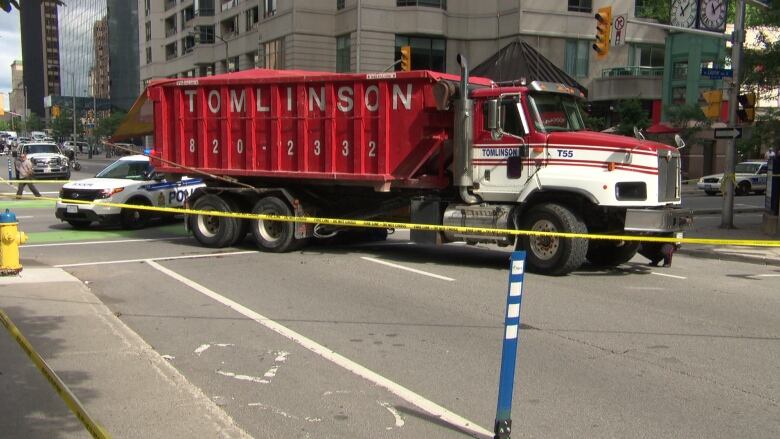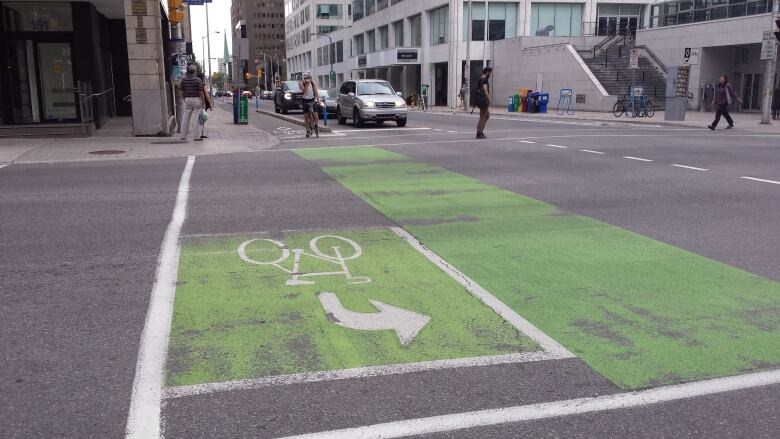Avoiding the 'right hook': How cyclists and drivers can prepare for an intersection
Drivers, cyclists can avoid dangerous situations by preparing well in advance of intersections

It's a dangerous and potentially deadly scenario:acar turns right at an intersection while a cyclist is biking straight through on the right side of the lane.
The phenomenon is known among cyclists as a"right hook,"and it's been blamed for the death of 23-year-old Nusrat Jahan, whowas struck by a dump truck in 2016while cycling in the bike lane on LaurierAvenue W.
The truck driver involved in the collision is currently on trial forcareless and dangerous driving.
How can a right hook be avoided? Experts say both drivers and cyclists need to prepare well in advance of an intersection.
Preparation is key
Brian Anderson, an instructor with Young Drivers of Canada, told CBC'sAll In A Day thatdrivers should be thinking about their turn before they enter anintersection.
"As I'm approaching a busy intersection, we're teaching that we're going to be seeing the cyclist as we approach it," he said.
For Anderson, this means leaving space for a cyclist ahead of hisvehicle at a red light, and allowing them to go through when it turns green.
"I'm not going to go past to then just stop at the red light, even if I'm turning right," he said.
If the light is green when approaching an intersection, Anderson recommends that drivers not onlygivespace tocyclists who are ahead of theirvehicle, but also check their blind spotover their right shoulder to see whethercyclists are approaching.
Defensive cycling
But Bill Bourne of the Ottawa Bicycle Club says not all drivers do a shoulder check and even if they do, cyclists sometimes move too fast to be seen.
"A driver mayshoulder check, they may look in the mirror you're not there five seconds later you are,"Bourne told CBC'sAll In A Day.

Part of the reason that a right hook is so dangerous, Bourne said, is because cyclists sometimes try to pass on the right.
Bourne says there are ways for cyclists to avoid a right hook scenario andaswith driving,preparation is key.
As a cyclist, Bourne says he "takes the lane" when he's ahead of vehicles approaching an intersection, meaning that he'llmove from the right-hand side of the lane into the middle.
"It absolutely prevents a vehicle from cutting me off," he said.
Bike lanes 'complicated'
Dedicated bike lanesdon't necessarilyimprovesafety at intersections, according to Bourne.
"If you're a cyclistriding in a segregated bike lane, you now need to be doubly careful about every driveway or parking lot," he said.
Anderson says segregated lanes can also make intersections more complicated for drivers especially new ones who have to pay attention to extra signs and lights.












_(720p).jpg)


 OFFICIAL HD MUSIC VIDEO.jpg)
.jpg)



























































































